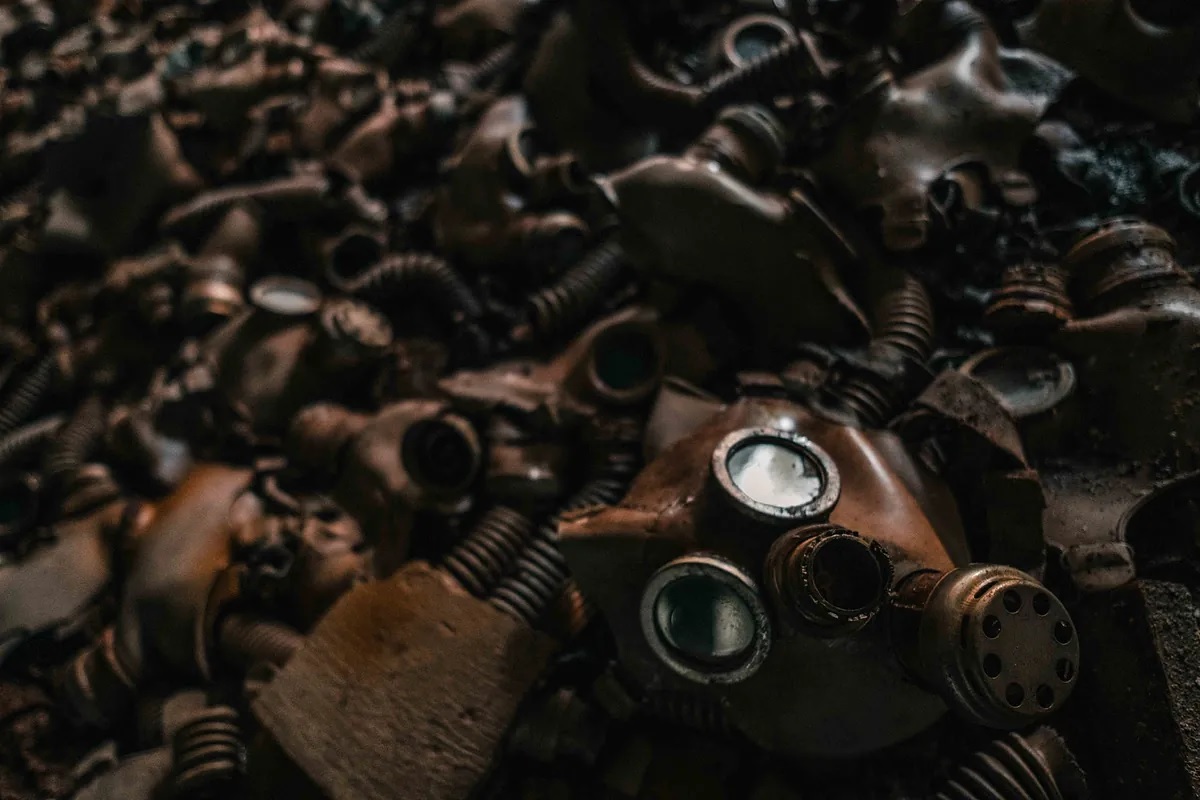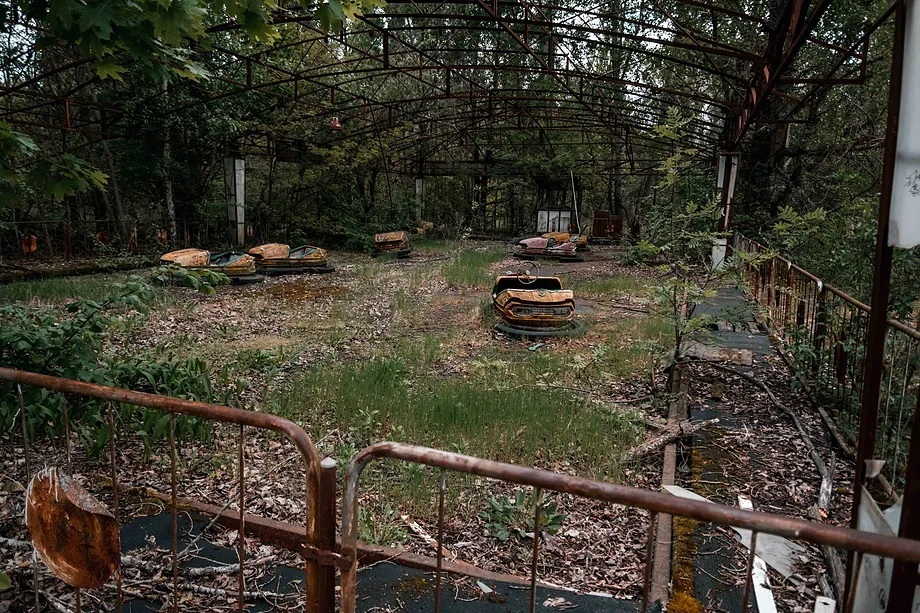In February 2022, when Vladimir Putin's regime ordered the invasion of Ukraine, Chernobyl was not prepared to repel any army. From the nearby Belarusian border, tens of thousands of Z troops broke through the barriers and entered the exclusion zone surrounding the plant. The Ukrainian military guarding the area were captured by the Russians, who seized the plant, including the accident zone from 1986 and its expensive protective sarcophagus. From there, they launched their assault on Kyiv, an hour and a half away, facing strong resistance from Ukrainian troops.
Today, the surroundings of that plant are much better protected. During this tour, we are not allowed to take photographs of military positions or point out any of the fortifications built in recent months, but it is evident that the exclusion zone has changed since the Russian occupiers were expelled in April 2022.
Ukraine has been transporting sand, earthbags, dragon's teeth, and other passive defense components to this location for a long time. Unlike the Russian troops, who were ordered to dig in highly contaminated areas (a practice confirmed by this reporter in 2023), the Kiev government has brought construction materials free of radioactivity from other parts of the country to build all these fortifications.
Although Ukraine is not at war with Belarus, the invasion towards the capital began from its border. To prevent it from happening again, Kiev has fortified all these border crossings. The passage of armored vehicles is constant, although radiation forces these soldiers to remain vigilant with their dosimeters to avoid exceeding dangerous doses. "No one trusts Russia or Belarus. The possibility of invading troops re-entering through here is very high again, which is why we see all this with such security," says Volodimir Verbytsky, our contact in the area, a former plant worker and one of the liquidators of the nuclear accident at reactor 4 who are still alive.
In the sarcophagus covering the plant, funded among others by the European Union, the huge hole left by a Russian drone attack on January 14, 2025, is still visible. The shrapnel opened a breach in the back layer whose repair will cost 25 million euros. Fortunately, the attack occurred in an area far from reactor 4; therefore, it did not pose an immediate risk of radioactive emissions, although it was a reminder of the lack of red lines and ethical boundaries of the Moscow regime even with such delicate facilities as this.
We enter the plant's cafeteria, which was looted by the Russian occupiers, like the rest of the facilities. After passing through a radiation scanner, confirming that we are clean, we join the workers in line with our tray. We have a more than decent borscht soup, a steak, and a salad with the rest of the plant operators. The plant, completely closed in 2000, still maintains a rotating staff to keep all critical elements under control, such as reactor 4 or the nuclear graveyard.
Gradually, the situation in the exclusion zone has been recovering. Radiation levels, which increased with the passage of Russian armored vehicles and the opening of their trenches, have dropped to normal levels, now measured with new dosimeters (the ones that were there were stolen by the Russians). However, between 70 and 80 members of the Ukrainian National Guard who were protecting the Chernobyl nuclear plant remain in captivity in Russia. This case has been described by experts and international organizations as a violation of international humanitarian law since nuclear facility workers and guards should not be subject to attacks or prolonged detentions. The situation remains a cause for concern for Ukrainian authorities and the international community.
At this time, the surroundings of Pripyat, the ghost town next to Chernobyl, evacuated several days after the reactor 4 explosion, make its apocalyptic contemplation difficult. Trees have taken over the streets and cover the abandoned buildings. "Do not step on the grass or moss," says Verbytsky, who has brought his own dosimeter. On the asphalt, there is less radiation than in the vegetation, which has accumulated contamination over the decades.
Although it is increasingly dangerous to venture inside the buildings due to their poor condition, it is an interesting and strange walk through the ruins of the Soviet Union. This city, the pride of the USSR, was created as the most advanced urban center in the entire Soviet world. It even had the first supermarket, with a capitalist aesthetic, and a modern restaurant. The radioactive footprint multiplies in the area of its never-opened amusement park. The May 1st workers' party in 1986 was never celebrated due to the April 26 atomic disaster, so no child ever rode its ferris wheel or bumper cars, which remain stranded in time and space, laden with atomic contamination. The dosimeter goes off if you bring it close to these attractions.
Trees have taken over the schoolyard. In the cafeteria, child gas masks are still scattered on the floor, used regularly for the military exercises typical of Cold War education. Many children's books remain on the desks, now swollen with moisture. A local newspaper lying in a hallway anticipates the opening of the amusement park. It is dated April 23, 1986, three days before the atomic disaster.


